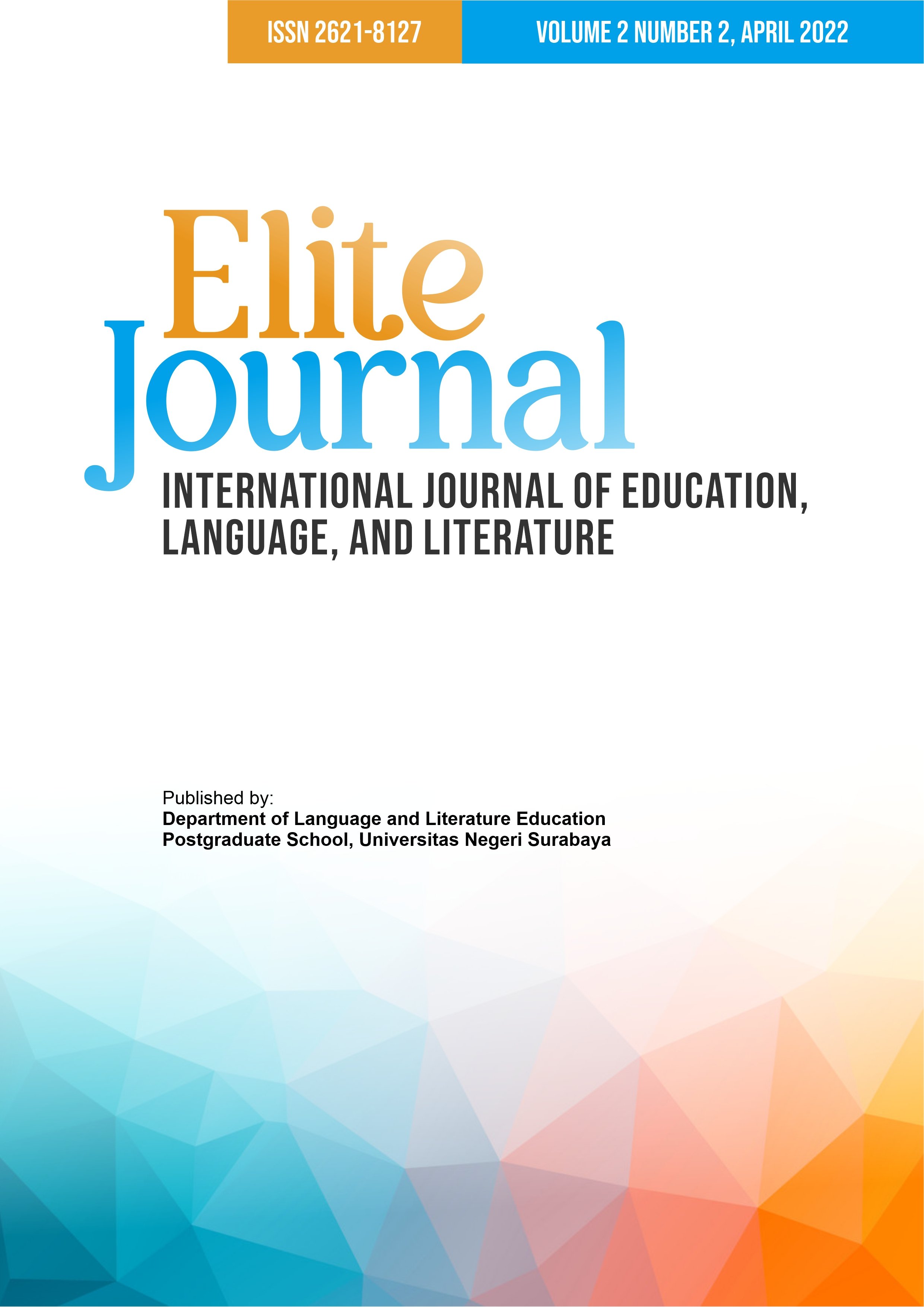RE-IMAGINING BLACK SCIENTIST IN HIDDEN FIGURES (2016)
DOI:
https://doi.org/10.26740/elitejournal.v2n2.p87-99Keywords:
black scientist, black feminism, racism, sexism, classismAbstract
Hidden Figures clearly show how the injustice committed by white people against black people as a society with majority status treat black people in Virginia, United States. This study aimed to represent Black Scientist characters and the intersectionality of racialized, gendered, and classed identity in reconceptualization of Black Feminism by Patricia Hill Collins. As can be seen in Hidden Figures, Theodore Melfi’s illustrated the lives of the Black Scientists to prove that they could achieve success. The research in Hidden Figures points out that Black scientists experienced sexism, racism, and classism as intersecting oppression. The state of being subjected to tyranny. The experience of facing gender, race, and socioeconomic discrimination in everyday life. Black Scientist women respond to prejudice by succeeding in their jobs via hard effort, exploiting the system and working against it, disregarding the prejudice, concentrating on their good fortune, and urging others to join the struggle. It becomes clear that the Black Scientist characters also have the qualities and thoughts of Black Feminists, which lead to conflicting behaviours. Finally, the characters' re-imagining of Black Feminist leads to the establishment of Black Scientist orientation and empowerment, which results in the characters' lives.
References
Ashcroft, B., Gareth, G., & Helen, T. (2013). Postcolonial studies: The key concepts (3rd edition). Routledge.
Classism Definition. (n.d.). Gustavus.Edu. Retrieved from https://gustavus.edu/reslife/documents/Classism.doc
Collins, P. H. (1991). Black feminist thought: Knowledge, consciousness, and the politics of empowerment. Routledge.
Deborah, L. M. (2000). Feminist theory and literary. Pluto Press.
Hooks, B. (2000). Where we stand: Class matter. Psychology Press.
Katz, M.L. and Shapiro, C. (1986). Technology Adoption in the Presence of Network Externalities. Journal of Political Economy. https://doi.org/https://doi.org/10.1086/261409
M. Andersen, H. T. (2013). Sociology: The Essentials (7th Edition). Wadsworth.
Maggie, H. (1992). Feminism: A reader (1st ed.). Routledge.
Maggie, H. (2003). The dictionary of feminist theory (2nd ed.). Edinburgh University Press.
Nachbar, J. G., & Lause? Kevin. (1992). Popular culture: An introductory text (1st ed). Bowling Green State University Popular Press.
Paul, T. L., & Merle, C. (1972). Rise of the American nation (3rd ed.). Harcourt, Brace & Company.
The Community of Scholars. (2020). 1,000 inspiring Black scientists in America. December 28, 2020. http://crosstalk.cell.com/blog/1000-inspiring-black-scientists-in-america
Theodore, M. (2017). Hidden Figures. 20th Century Fox.
Downloads
Published
How to Cite
Issue
Section
License
Copyright (c) 2022 Rini Uswatun Hasanah, Much Koiri

This work is licensed under a Creative Commons Attribution 4.0 International License.
 Abstract views: 675
,
Abstract views: 675
, PDF Downloads: 816
PDF Downloads: 816





